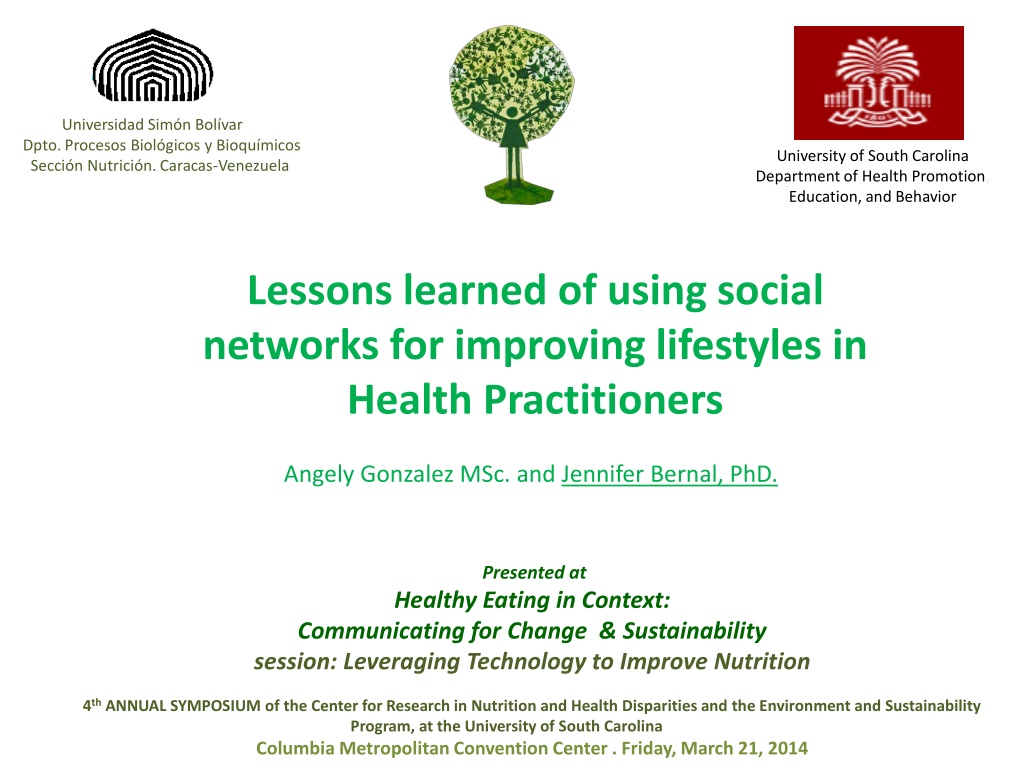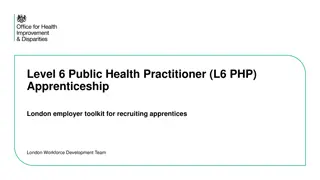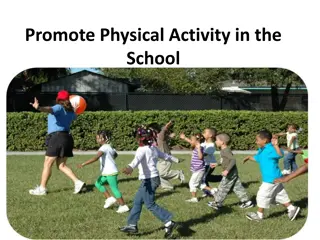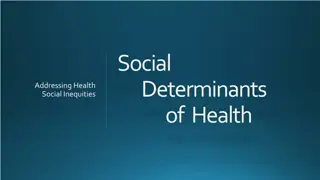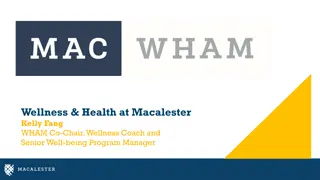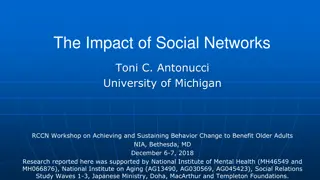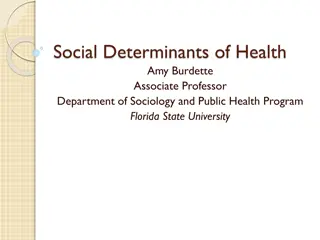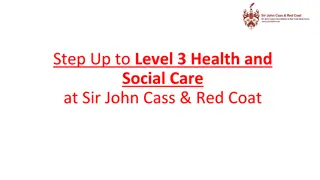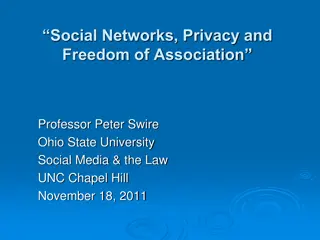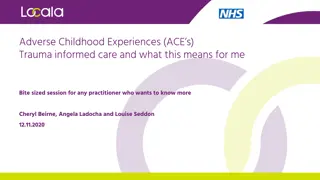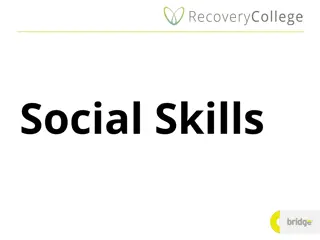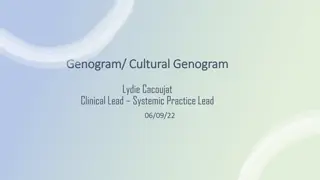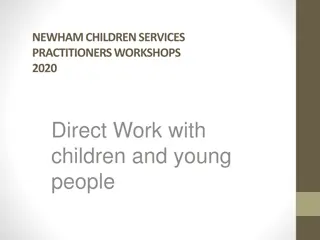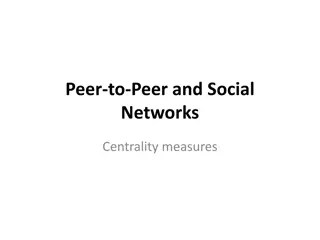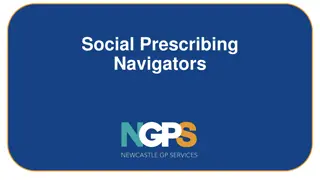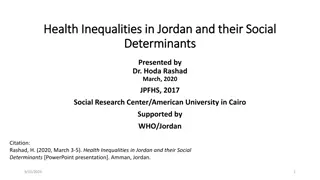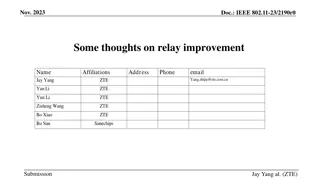Using Social Networks to Improve Lifestyles of Health Practitioners
This study implemented an intervention utilizing social networks to enhance the lifestyles of health practitioners (doctors, nurses, nutritionists). Through daily messages or images sent via social networks over an 8-week period, the intervention focused on promoting better diet quality and physical activity habits among participants. Results highlighted positive changes in lifestyle behaviors, demonstrating the potential impact of leveraging technology for healthcare improvements.
Download Presentation

Please find below an Image/Link to download the presentation.
The content on the website is provided AS IS for your information and personal use only. It may not be sold, licensed, or shared on other websites without obtaining consent from the author. Download presentation by click this link. If you encounter any issues during the download, it is possible that the publisher has removed the file from their server.
E N D
Presentation Transcript
Universidad Simn Bolvar Dpto. Procesos Biol gicos y Bioqu micos Secci n Nutrici n. Caracas-Venezuela University of South Carolina Department of Health Promotion, Education, and Behavior Lessons learned of using social networks for improving lifestyles in Health Practitioners Angely Gonzalez MSc. and Jennifer Bernal, PhD. Presented at Healthy Eating in Context: Communicating for Change & Sustainability session: Leveraging Technology to Improve Nutrition 4th ANNUAL SYMPOSIUM of the Center for Research in Nutrition and Health Disparities and the Environment and Sustainability Program, at the University of South Carolina Columbia Metropolitan Convention Center . Friday, March 21, 2014
Background o Health practitioners have little time to eat, sleep and exercise right. o Doctors and nurses have relatively poor health (1). Nurses' diet and exercise habits are influenced by social interaction with colleagues at work and by the disruption to their circadian rhythm(2). o Access to phones and social networks: o 98 out of 100 citizens had mobile phones. o It ranked the position 36 out 212 with internet users. Almost half the population had internet at homes (3). 1. Qual Life Res. 2012 21 (10):1727-30. 2. J Nurs Manag. 2006 14 (5): 414-23. 3. Int. telecommunications Union, 2012).
Objective Designed and applied an intervention for improving lifestyles (diet and physical activity) in health practitioners (HP), based on daily messages or images send through social networks (SN).
Methods n=100 HP volunteers (doctors, nurses, nutritionists) 80% females Public Hospital in Caracas,Venezuela 1. Baseline measurement: i. Lifestyles pattern (diet quality , sleep pattern and physical activity and sports) (Swindale y Bilinsky, 2006; Arrivillaga and Salazar, 2005)+ measurement of abdominal circumference (n=34). ii. Preferred social network for receive messages or images, for a 8 week-period. 2. Analysis of basal measurements decisions design of intervention. 3. Follow up: Evaluation of changes in lifestyles and the intervention by HP. 4. Ethical approval: HP signed an inform consent and approval of the Hospital IRB. 5. Analysis: Descriptive statistics and non-parametric test were applied
Results. Design of intervention Consisted in sending one daily-morning message or images encouraging HP, to improve their lifestyles. Duration of message: 30-60 seconds, during a 8 week-period. Facebook and blog page Topic selected Messages Images Diet quality (portion size, fast food, balanced meals) 27 10 70 Water intake 6 6 E-mail 60 50 Beverage and sugar intake 5 5 40 Facebook 30 Salt intake 6 5 20 Whatsapp /SMS 10 Active lifestyles 11 11 0 Social net Total 55 37
Results. Selected messages and graphics Beverage intake Diet quality Water intake 1 soft drink (500ml) has 11 spoons of sugar. Avoid it! Salt intake Active lifestyles Move for your health. 30 minutes a day .
Results. Comparison between the baseline and follow-up assessment to improve lifestyles in HP (n=100) Selected indicators o variables Baseline (%) Follow-up (%) p-value Less than 3 meals/day 11 7 0.32 Healthy pattern snack 23 11 0.02 Low-fat milk intake 53 66 0.06 Use of sugar ( 2 times/day) 33 26 0.28 Use of salt 69 68 0.28 Risk abdominal circumference 24 24 1.00 Sedentary behavior (none PA) 40 38 0.77 Sleep time (<7h/day) 48 47 0.89
Results. Messages preferred by HP 6%2%1% 7% 3% 9% 29% 3%8% 12% 18% 25% 77% Pyramid Healthy plate Sugar in beverages Energy expenditure by activity Sodium in food Sodium in beverages Importance Meal time Water intake Use stairs Sauces nutrition facts None None
Lessons learned 50 Read daily 40 From the health practitioners: o Easy to understand o Fast for reading o Use friendly and funny images From our research team: o Content and extension of the message o Clarity of the image o Equilibrium varying messages and images o Reduce quantity of topic for intervention o Time of intervention o Refine instruments to capture change behavior o Compare with objectives measurements o Verify if subjects read and understand messages or images 30 Access 20 Intensive use 10 0 Fastest Use of SN
Messages are technically clear. What and how to deliver it is a challenge To the right audience, at the right time. Messages are technically clear. What and how to deliver it is a challenge. To the right audience, at the right time. Messages are technically clear. What and how to deliver it is a challenge. To the right audience, at the right time. Messages are technically clear. What and how to deliver it is a challenge. To the right audience, at the right time.
